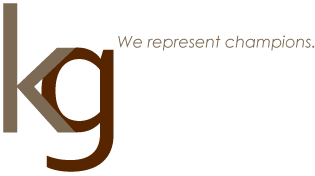
Porsche Motorsports Situation Analysis: Porsche Cars North America uses auto racing as a significant tool to keep its current customers convinced that the company is on the leading edge of speed and performance, and show potential customers that Porsche is the ultimate sports car. When the company debuted its 2000 Porsche 911 GT3 R race car at the 24 Hours of Daytona, it was the largest gathering of production, purpose-built race cars ever fielded by a car manufacturer. No less than 23 of these cars, entered by teams from both North America and Europe, would take to the famous Daytona International Speedway in front of a live television audience to show their wares. After the first several hours of the event, several of the cars began to come into the pits with cooling problems. Leaks were coming from the water pumps, and many of the cars had to have their pumps replaced. Some cars did not come in fast enough for the repair, and overheated their engines. In all, 19 of the 23 cars suffered major damage, all unfolding in front of a live, world-wide TV audience. For a company which builds its reputation on the race track, this was a major blow. Strategy: The KGPR personnel, the internal Porsche PR manager, and the director of racing operations met as the crisis unfolded, and developed a two-pronged approach to handle the situation. Results: Besides gaining the respect and appreciation of the Porsche engineers, who usually find it hard to understand the benefits of public relations, Porsche strengthened its relationship with the media. The TV and print journalists understood that Porsche PR would be honest with them, and they could come to Porsche PR for good information. As it turned out, the water pumps were failing because of sand left into the engines when they were cast at the factory. Porsche owned up to this problem, and the media gave the company the benefit of the doubt, resulting in articles that were positive about the company’s problem-solving abilities rather than coverage that was negative. Liberty Productions Auto Shows Situation Analysis: Liberty Productions, a company contracted to organize and promote medium-sized auto shows around the country, was receiving criticism from its clients – dealer associations – for its poor relationship with local media in the auto show markets. The company was not getting consistent pre-show information to auto writers, not making contact with TV assignment editors, and refusing to issue credentials, fearing it would cut down on admissions revenue. After the Newark Star-Ledger auto editor complained to the local auto show organizer, the show asked for how the situation could be fixed, and the journalist recommended Kermish-Geylin Public Relations to handle the media. Strategy: With its experience as the PR firm for the New York Auto Show, its relationships with auto and business editors around the country, and its client work at auto shows for Porsche, Subaru, Chrysler, Volkswagen, Nissan, Mercedes, Volvo, Toyota, and Hyundai, KGPR understands the needs of auto show promoters, manufacturers and media. The following PR procedures were implemented. Results: The following changes occurred in the auto show operations in San Diego, Portland, Tampa, Orlando, Phoenix, Anaheim, Atlantic City, Philadelphia, Milwaukee, and Salt Lake City 1994 - 1998: • Show attendance was increased 25 percent, with surveys showing that many new attendees heard Fram, Inc. Situation Analysis: Fram, Inc., a division of Allied Automotive, is the leading brand of aftermarket oil and air filters. Fram became aware that CONSUMER REPORTS was testing oil filters, with a possible result being that a no-name or store brand could be rated better than the Fram brand. The company realized that they had no control over the way the magazine tested the filters, and feared that a faulty test method would give their filter a bad reputation or poor value image. Fram found out that the test was to be published in the November issue, and asked for help from the PR firm. Strategy: The agency set up the following plan to combat the potential disaster: When the magazine was published, the result was quite different than suspected. The magazine not only rated Fram the best filter, but “check-rated” the filter as a “best buy.” Now the client needed an emergency plan to promote the CU results given the constraints against using the magazine’s name in any commercial mention. The agency, within 24 hours, came up with the following plan: Results: Many of the nation’s top newspapers ran the story about the magazine test quoting the magazine article directly using the magazine that was mailed to them. It made headlines in the trade magazines, and consumers read the article right at point of purchase. Sales of the Fram Wearguard filter went up 10 percent to the trade and installer base, and 20 percent among do-it-yourselfer at retail.
© 2010 Kermish-Geylin Public Relations, Inc. |